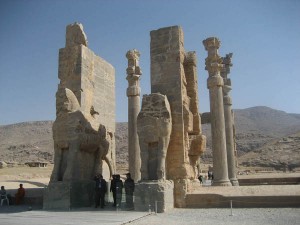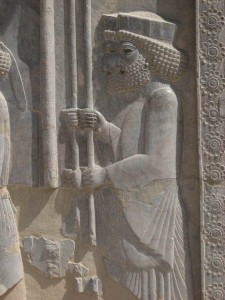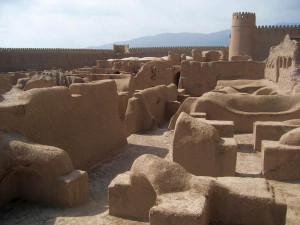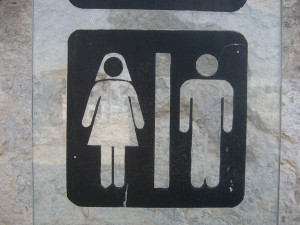Kerman would be southernmost turnaround point of our tour before heading back north. Now closer to the Pakistani border, the clothing styles began to change. Many of the men wore what looked like a long, knee length night shirt over same color baggy pants. I didn’t notice a change in the women’s styles, though as it still ranged between the all black chador head to toe, to the short, tight manteaus (knee-length coats) with the sleeves and hems creeping dangerously shorter.
It was while I was in Kerman that I had one of the more bizarre experiences of my travels. In search of an internet shop I saw a sign in the window, but turns out the actual computers were located down a long alleyway behind the shop. I asked the proprietor for directions using my universal symbol for internet, fingers typing on an imaginary keyboard. This beautiful young woman grabbed my hand and led me down the street to the shop. It is typical in Iran to see two females or two males walking hand in hand, I just did not expect to be one of them! Walking a full city block hand in hand with a total stranger, a female no less, was one of my most awkward culture shock moments.
Perhaps the biggest tourist attraction and UNESCO World Heritage site in Iran is the ruins of the ancient city of Persepolis, first capital of the Achaemenid Empire built in 510 BC, later burned to the ground by Alexander the Great in 330 BC. I guess after surviving the fire and a few thousand years, I expected too much. I realize I was tempered by the scorching heat and spoiled by the magnitude of the ruins of Ba’albek in Lebanon and Palmyra in Syria, because Persepolis was not as expansive as I expected for an “Ancient Wonder of the World.” I do have to say, though there were some extremely impressive bas-reliefs covering the walls and staircases that were in excellent condition and very worthy of the visit in spite of the torrid mid-day heat.
The other more famous UNESCO site in Iran was the ancient old adobe village of Bam which was destroyed by the 2003 earthquake leaving it virtually a pile of rubble. A second smaller village, Rayen, made completely of mud and straw is vying for second place, but sadly the dentil-topped turrets make it look more like a recreated city, like the “Williamsburg of Iran.”
One of my most memorable moments in Iran occurred at the entrance of the shrine of Aramgah-e Shah Ne’Matollah Vali, a famous Sufi dervish from the 15th century. As I was coming out of the shrine, I met a young woman on her way in who stopped me to ask the usual questions; where was I from, and how did I like Iran? She also asked “How do you find wearing the hejab?” (mandatory head covering) so I decided to turn the tables and ask the same of her, and whether she would get rid of it if she had a choice? She had on a long, beautiful flowing purple scarf wound loosely around her head, and as she flipped the end over her shoulder she answered, “My God, yes!! I do not believe my God cares about such things!” I told her I liked her perspective.




